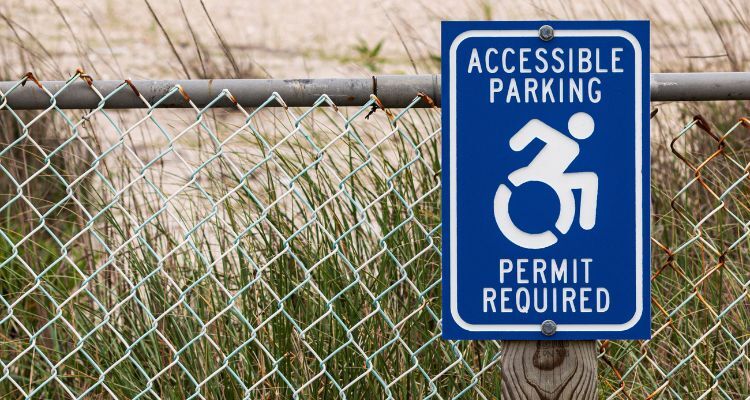
Exploring the Different Types of Handicap Placards in Montana
For individuals with disabilities, accessibility is a fundamental right that makes it possible to engage more fully in everyday activities. Disability tags, also referred to as placards or permits, are vital tools for enhancing mobility and accessibility by allowing individuals to park in designated accessible spaces that are closer to entrances of buildings. MT offers several types of disability tags, each tailored to meet the unique needs of individuals with various levels of mobility restrictions.
This article will explore the different types of handicap placards available in Montana, detailing their purpose, eligibility criteria, application process, and renewal requirements. We’ll also provide answers to frequently asked questions (FAQs) and conclude with a summary of the key points to help readers navigate the application and use of disability tags effectively.
Understanding Disability Tags in Montana
What Are Disability Tags?
A disability tag is a parking permit that allows individuals with disabilities to use accessible parking spaces located closer to the entrances of public and private facilities. These spaces are specially marked with the international symbol of accessibility, providing additional room for users who may need assistance, such as wheelchair access or room to maneuver with other mobility aids.
Importance of Disability Tags
Disability tags are more than just parking permits; they promote inclusivity and independence by reducing physical challenges and allowing individuals to access essential services, public places, and other amenities more easily. These tags also help ensure compliance with the Americans with Disabilities Act (ADA), which mandates accessible parking for individuals with disabilities.
Eligibility Requirements for Disabled Permits in Montana
MT’s disability tag program is designed to serve individuals with medical conditions that restrict mobility or cause severe physical limitations. To qualify, applicants must meet specific criteria, often certified by a licensed medical professional. Some common qualifying conditions include:
- Inability to walk 200 feet without stopping for rest.
- Need for assistance with mobility aids such as wheelchairs, crutches, or walkers.
- Severe lung or respiratory conditions affecting oxygen levels.
- Heart conditions classified as Class III or IV by the American Heart Association.
- Severe orthopedic, arthritic, or neurological conditions that affect balance and movement.
When applying, a licensed physician, nurse practitioner, chiropractor, or physical therapist must certify the applicant’s condition on the application form, verifying the necessity of a disability tag. This certification is crucial, as it ensures that only those who genuinely require accessible parking receive these valuable resources.
Applying for a Handicap Placard in Montana
The application process for a Montana handicap placard is straightforward. Here’s a step-by-step guide to help you navigate the requirements:
Complete the Application Form
Begin by obtaining the official application form (Form MV5) for disability tags. You can download the form from the state's Department of Justice’s website or pick it up at your local county treasurer’s office.Obtain Medical Certification
Schedule a visit with a licensed HandicapMD healthcare provider, who will review your condition and complete the medical certification portion of the form. This certification confirms your eligibility for a disability tag based on your physical limitations.Submit the Application
After filling out the form and obtaining medical certification, submit it to your local county treasurer’s office in person or by mail. There is no fee for obtaining a disability tag; however, if you’re applying for a disability license plate, standard registration fees apply.Receive Your Tag
Upon approval, you will receive your disability tag or license plate. Make sure to read any guidelines or informational materials provided with your tag to ensure proper use and compliance with the state’s regulations.
Temporary tags are valid for six months unless specified otherwise by the certifying medical professional, while permanent tags require renewal every three years. Disability license plates are renewed annually, following standard vehicle registration protocols.
How to Obtain a Permit Online with HandicapMD.com
HandicapMD.com offers a convenient telehealth service that simplifies the process of getting your disabled parking permit by allowing you to:
- Sign Up: Visit the HandicapMD.com website and fill out the necessary form to schedule a consultation.
- Consultation: A certified doctor will assess your medical records and determine whether you meet the eligibility criteria.
- Medical Certification: The doctor will complete the certification section of the Montana Disabled Parking Permit Application form (Form MV5).
- Submit Your Application: Once your form is completed, submit it to the state's DMV either in person or by mail.
Why Getting the Permit Online is Beneficial
- Convenience: With HandicapMD.com, you don’t need to visit a doctor’s office. You can complete the entire process from home.
- Expertise: HandicapMD doctors specialize in understanding ADA guidelines and determining eligibility for disabled permits, ensuring a smoother process.
- Efficiency: The service allows for quick evaluations, helping you get your permit faster than traditional method.
Renewing and Replacing Handicap Placards in Montana
Maintaining a valid handicap permit is essential for uninterrupted access to accessible parking. Here’s what you need to know about renewing and replacing your tag:
Renewing Permanent Tags
Permanent disability tags in MT are valid for three years. Renewal reminders are typically mailed to the address on file with the MVD. No new medical certification is required unless there is a change in the holder’s condition.Renewing Temporary Tags
Temporary tags are only valid for the duration specified by the medical provider, up to a maximum of six months. If an extension is needed, the applicant must complete a new application form and obtain updated medical certification.Renewing Disability License Plates
Disability license plates are renewed as part of the vehicle’s standard registration process, which generally occurs annually. While the plate itself does not require medical recertification, the vehicle owner must still meet eligibility requirements.Replacing Lost or Stolen Tags
If your disability tag or license plate is lost or stolen, report it immediately to your local county treasurer’s office. Replacement tags are issued after submitting a replacement application form, and fees may apply depending on the circumstances.
Types of Handicap Placards Available in Montana
MT offers four main types of handicap placards to meet the varied needs of residents with disabilities:
1. Permanent Disability Tag
The Permanent Disability Tag is designed for individuals with long-term or permanent disabilities that are unlikely to improve. This type of parking pass is valid for up to three years and allows the holder to park in designated accessible spaces. Because this tag does not expire annually, it is ideal for individuals with chronic disabilities that limit their mobility.
2. Temporary Disability Tag
A Temporary Disability Tag is intended for individuals with short-term mobility impairments, such as those recovering from surgery or an injury. This parking pass is valid for a maximum of six months and can be renewed with updated medical certification if the disability persists. It is specifically meant for those with temporary conditions that are expected to improve over time.
3. Disability License Plates
Disability License Plates are affixed to a vehicle registered to an individual with a permanent disability. These plates provide the same parking privileges as the disability tags and are a convenient option for those who have a vehicle registered in their name. Disability license plates are issued for the full registration period and must be renewed with the vehicle registration.
4. Disabled Veteran License Plates
The Disabled Veteran License Plates are exclusively for veterans with a service-connected disability rated by the U.S. Department of Veterans Affairs. These plates grant the same parking privileges as other disability tags and are a symbol of recognition for the service and sacrifices made by disabled veterans. These plates must also be renewed along with the vehicle’s registration.
Each type of tag provides essential access to designated accessible handicap parking spaces in public and private facilities across MT, ensuring greater convenience and mobility for individuals with qualifying disabilities.
Using Disabled Permits Properly in Montana
Correct Display of Tags
To use your disability tag legally in MT, display it properly as follows:
- Tags should be hung from the rearview mirror with the front side visible from outside the vehicle.
- Disability license plates must be affixed to the vehicle’s front and rear.
If your tag is not visible from the outside or your license plate is not installed correctly, you may receive a parking violation.
Where You Can and Cannot Park
An MT disability tag allows you to park in accessible spaces marked with the international symbol of accessibility. However, it does not permit you to:
- Park in fire lanes, loading zones, or no-parking areas.
- Use metered spaces for free unless local regulations allow it.
- Park in areas with time restrictions beyond the posted limits.
Legal Rights and Protections for Disabled Permit Holders
Holders of a disability tag in MT are protected under both state and federal laws, ensuring they have the same access to public spaces as anyone else. The Americans with Disabilities Act (ADA) is a key piece of legislation that prohibits discrimination based on disability, and it applies to public and private entities alike. In MT, these protections extend to ensuring that individuals with disabilities have access to parking, buildings, and services.
Disability tag holders are also protected against the misuse of their tags. Unauthorized use of a disability tag, whether by the holder or another individual, is subject to fines and penalties. It’s important to understand that the tag is meant solely for the use of the person with the disability, even if someone else is driving them.
Rules and Responsibilities for Using Handicap Placards in Montana
Using a disability tag in MT comes with specific responsibilities. Here are some guidelines to ensure proper and legal use:
- Display the Tag Correctly: When parked in an accessible space, hang your tag from the rearview mirror with the expiration date visible. Remove the tag when driving to avoid obstructing your view.
- Use Only When Necessary: Only use accessible parking spaces when the individual with the disability is in the vehicle. Misuse by friends, family members, or others is a violation of Mt’s disability tag regulations.
- Avoid Lending the Tag: Disability tags are for personal use only. Allowing someone else to use your tag, even with permission, is strictly prohibited.
- Report Misuse: If you notice someone misusing a disability tag, report it to local authorities. Misuse diminishes the availability of accessible spaces for those who genuinely need them.
Following these guidelines helps protect accessible parking spaces and promotes a fair and inclusive environment for all individuals with disabilities in MT.
Benefits of Having a Disabled Permit in Montana
Having a disability tag offers significant benefits for individuals with limited mobility or other qualifying conditions. Here’s a look at the primary advantages:
- Access to Reserved Parking Spaces: Disability tags grant access to designated accessible parking spaces close to entrances, reducing the need for long walks and minimizing physical strain.
- Ease of Access at Public Venues: From shopping centers to government buildings, disability tags provide improved access to essential services and facilities.
- Convenience When Traveling: MT disability tags are often recognized in other states, allowing individuals to use accessible parking across state lines when traveling. However, it’s essential to verify each state’s rules for compliance.
- Extended Parking Privileges: In some cases, disability tags may offer additional time for metered parking, allowing individuals to complete tasks without the added stress of time limitations.
These benefits contribute to an overall increase in independence and mobility for individuals with disabilities, helping them navigate daily life with greater ease and dignity.
Frequently Asked Questions (FAQs)
1. Can I use my MT disability tag in other states?
Yes, MT disability tags are valid nationwide, thanks to the Americans with Disabilities Act (ADA). You can use your tag to park in designated accessible spaces across all U.S. states. However, make sure to check local regulations regarding time limits or fees, as they may differ from Mt’s rules.
2. Is there a fee for applying for a disability tag?
No, MT does not charge a fee for issuing or renewing disability tags. However, standard registration fees apply to vehicles with disability license plates, including Disabled Veteran Plates. It is best to check current fees, if applicable at the Montana Department of Justice’s website.
3. How long is a temporary disability tag valid?
Temporary disability tags are valid for up to six months and can be renewed with updated medical certification if the condition persists beyond the initial six-month period.
4. Can someone else use my tag without me present?
No. MT law prohibits others from using your disability tag if you are not in the vehicle. The tag is issued to you as an individual, and misuse by others can result in penalties, including fines or revocation of the tag.
5. How do I report misuse of disability tags?
If you witness someone misusing a disability tag, report the incident to local law enforcement or parking enforcement authorities. Provide details such as the vehicle’s location, license plate number, and the nature of the misuse.
6. How do I apply for a replacement if my disability tag is lost or stolen?
Report the loss or theft to your local county treasurer’s office and complete a replacement application. You may need to pay a nominal fee depending on the circumstances.
7. Do I need to renew my permanent disability tag every three years?
Yes, permanent disability tags in MT are valid for three years. You will receive a renewal reminder by mail, and no new medical certification is required unless your condition changes.
8. Can I lend my disability tag to a family member if they’re running an errand for me?
No, disability tags are assigned to individuals with disabilities, not vehicles. Lending your tag to others, even family members, is against the law.
9. What qualifies as a “severe mobility impairment” for eligibility?
Qualifying conditions typically include an inability to walk 200 feet without resting, reliance on mobility aids, and severe respiratory or cardiac conditions. A licensed medical provider can help determine if your condition meets the criteria.
10. Do I need new medical certification to renew a temporary tag?
Yes, temporary tags require medical recertification upon renewal, as they are issued for short-term use.
11. Can I apply for both a disability tag and a disability license plate?
Yes, eligible individuals may apply for both if they frequently switch between different vehicles or want to ensure their vehicle has a permanent accessibility designation.
Conclusion
Understanding the types of handicap placards available in Montana can significantly improve the lives of individuals with disabilities, offering essential parking privileges and accessibility. By selecting the tag that best suits their needs—whether a permanent tag, temporary tag, or disability license plate—MT residents can experience greater independence and mobility. Following the application, renewal, and replacement guidelines ensures continuous access to these valuable resources, while responsible use protects the accessibility system for all eligible individuals.
If you’re eligible for a disability tag, the application process is straightforward, and renewal is simple. By adhering to the rules for displaying and using these tags, you can maximize the benefits they offer and help maintain the integrity of accessible parking spaces in MT. The state's commitment to supporting its residents with disabilities shines through in its disability tag program, which not only provides accessible parking but also promotes inclusivity across public spaces.
.png)






